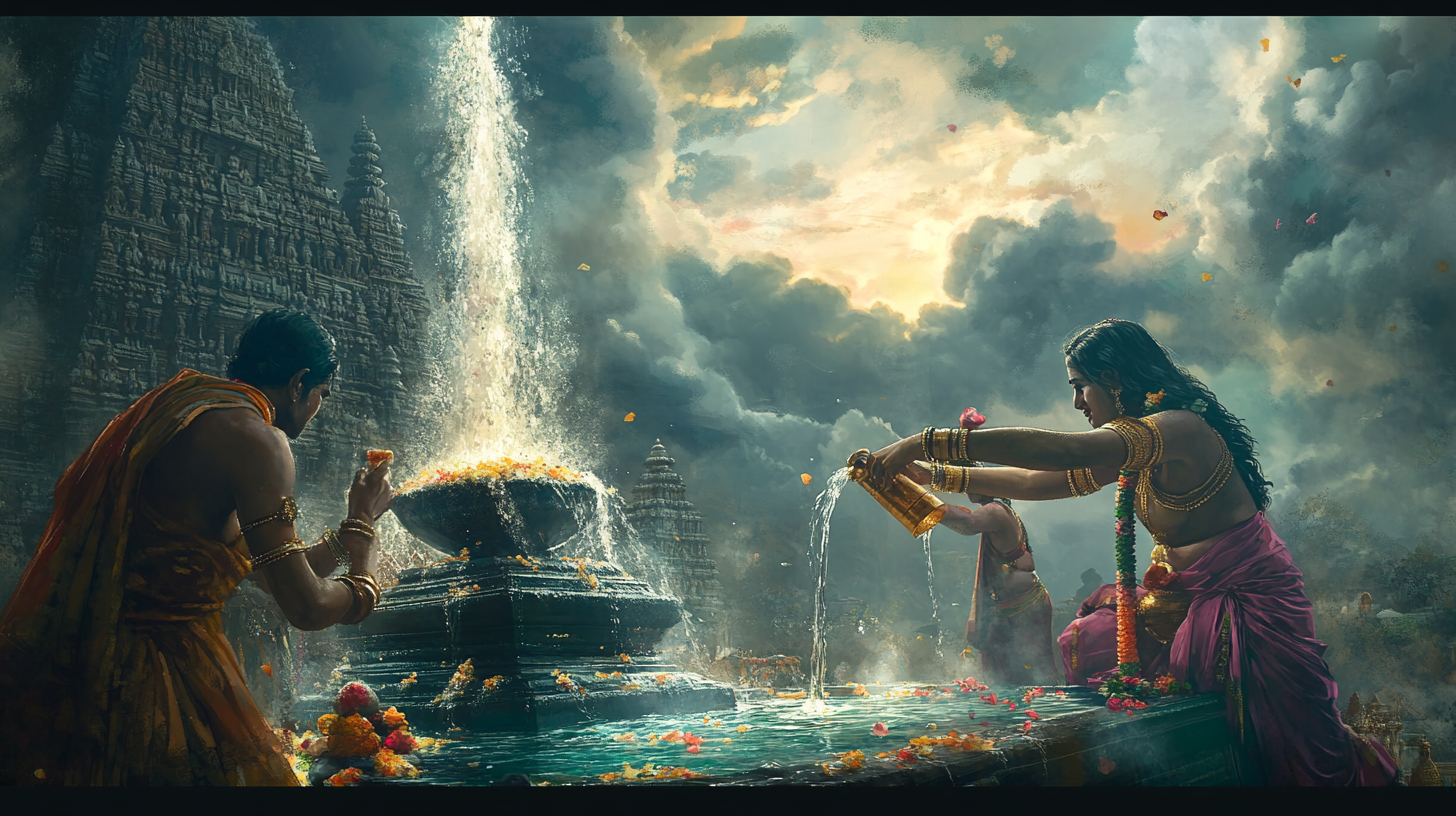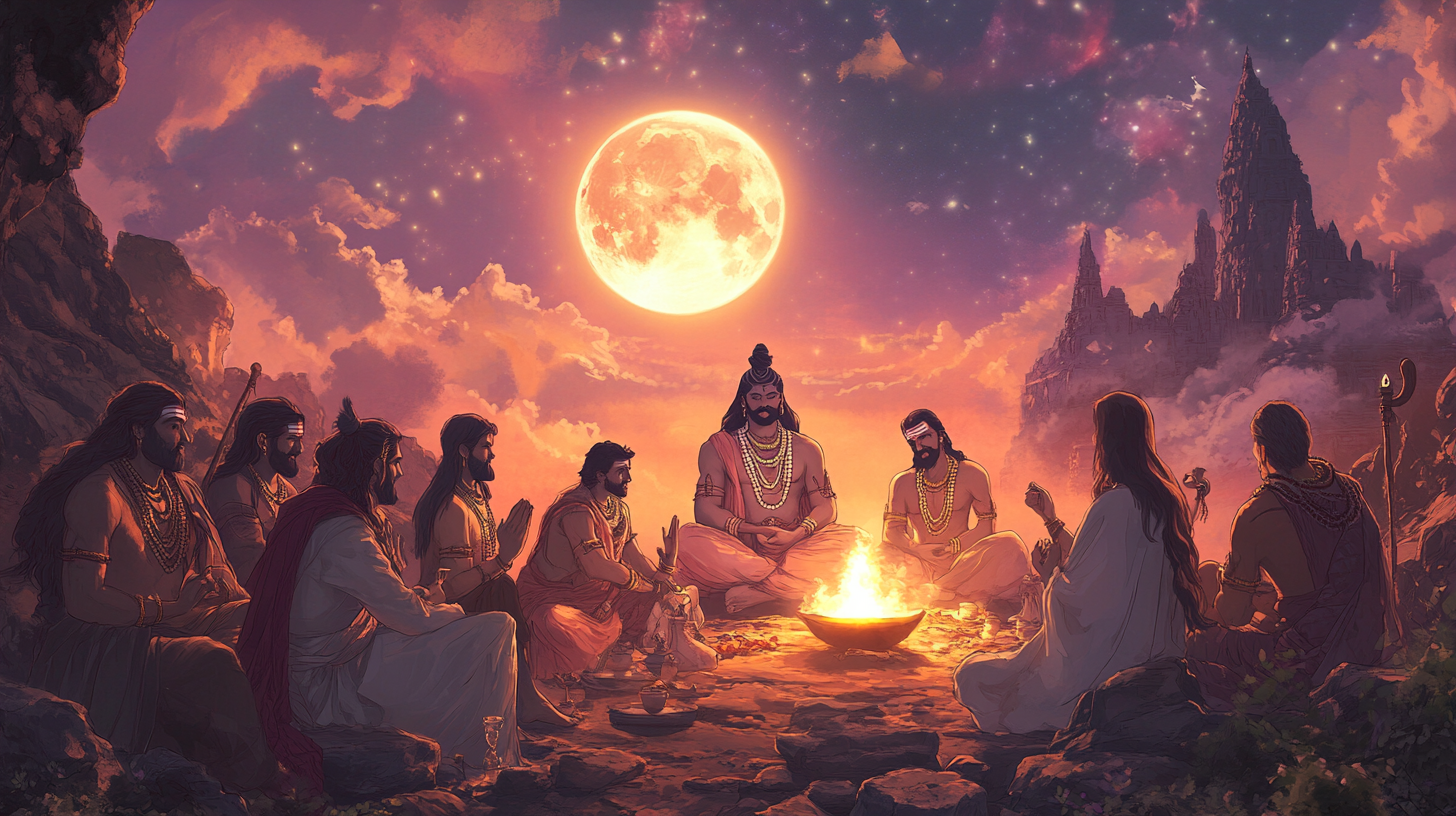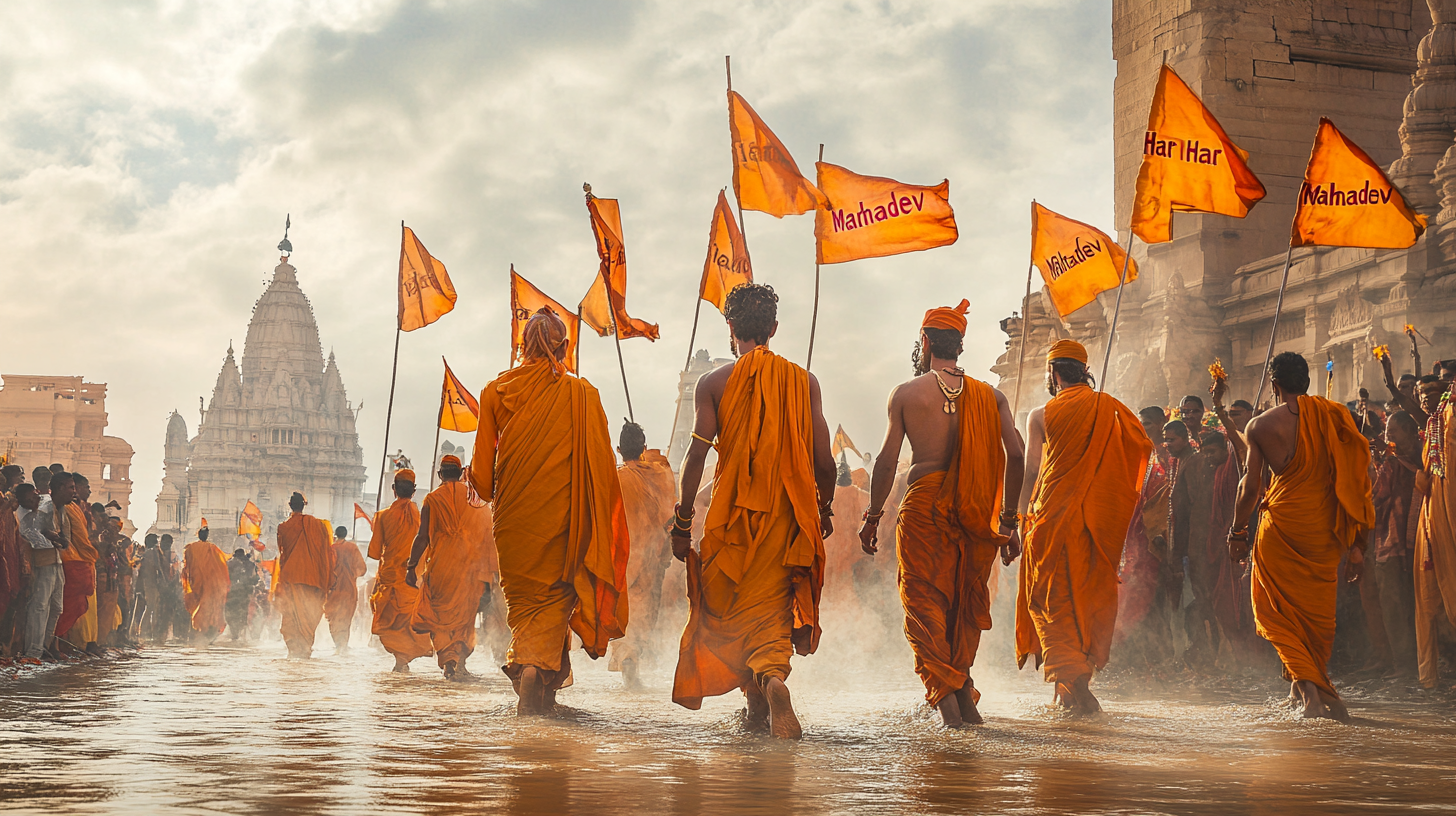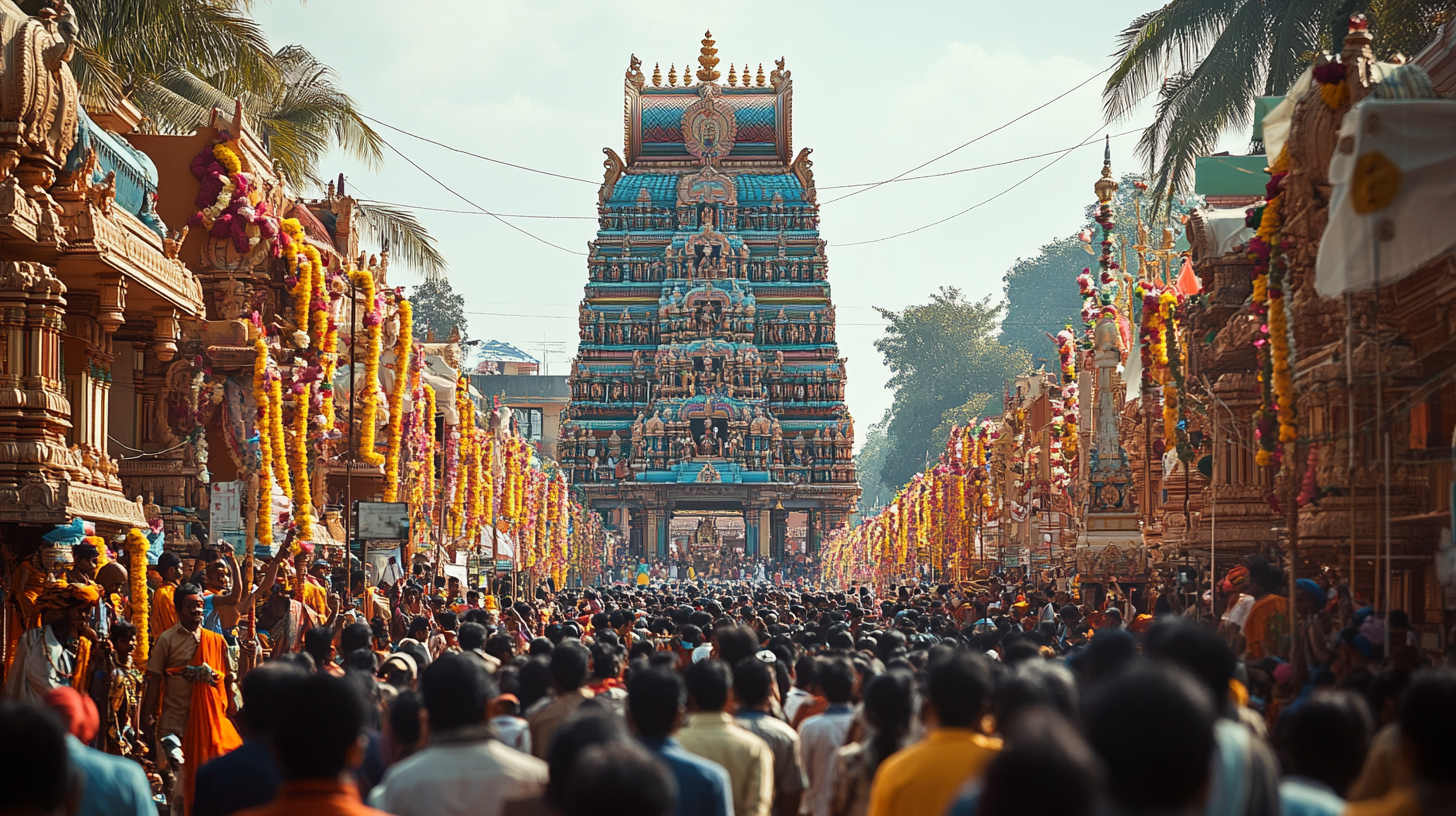Sawan, also known as Shravan, is one of the most sacred months in the Hindu calendar. It holds a special place in the hearts of devotees, especially those who worship Lord Shiva. This month, which usually falls between July and August, coincides with the monsoon season, bringing a sense of renewal and devotion.
Sawan is deeply connected to Lord Shiva, the destroyer and transformer in the Hindu Trinity. It is believed that during this month, Lord Shiva’s blessings are most powerful, and devotees observe fasts, perform rituals, and offer prayers to seek his grace. The sound of temple bells, the fragrance of incense, and the chants of “Om Namah Shivaya” fill the air, creating a spiritual atmosphere.
In this article, we’ll explore the significance of Sawan, the rituals and fasting practices, and how different regions in India celebrate this auspicious month. Whether you’re a devotee of Lord Shiva or someone curious about Hindu traditions, this guide will help you understand the beauty and depth of Sawan.
And if you’re looking to bring the divine energy of Lord Shiva into your home or car, check out our exquisite collection of idols at Dev Tattva. Let his blessings guide you through this sacred month and beyond.
Mythological Significance of Sawan Month

Samudra Manthan Story: How Lord Shiva Became Neelkanth
The story of Samudra Manthan, or the churning of the ocean, is one of the most fascinating tales in Hindu mythology. It explains how Lord Shiva earned the name Neelkanth (the one with a blue throat) and highlights his selfless nature.
Long ago, the Devas (gods) and Asuras (demons) decided to churn the ocean to obtain the nectar of immortality, known as Amrit. They used Mount Mandara as the churning rod and Vasuki, the serpent king, as the rope. As they churned the ocean, many divine objects and beings emerged, including the deadly poison Halahala.
This poison was so potent that it threatened to destroy the entire universe. The Devas and Asuras were terrified and turned to Lord Shiva for help. Without hesitation, Shiva drank the poison to save the world. However, instead of swallowing it, he held it in his throat, turning it blue. This act earned him the name Neelkanth.
Goddess Parvati, fearing for Shiva’s life, gently held his throat to prevent the poison from spreading. Her touch soothed him, and the poison remained harmless. This story, found in the Vishnu Purana and Shiva Purana, symbolizes Lord Shiva’s compassion and willingness to bear the world’s suffering for its well-being.
During Sawan, devotees remember this act of sacrifice and worship Lord Shiva with even greater devotion. If you wish to invite his divine energy into your life, explore our collection of Lord Shiva idols at Dev Tattva. For more stories about Hindu deities, check out our blog on How Powerful is Shiva?.
Why Sawan is Dedicated to Shiva
Sawan holds a special place in the hearts of Lord Shiva’s devotees. According to Hindu mythology, this month is considered the most auspicious time to worship Shiva. The Skanda Purana mentions that during Sawan, the cosmic energy aligns in a way that amplifies the power of prayers and rituals dedicated to Lord Shiva.
One popular belief is that Goddess Parvati performed intense penance during Sawan to win Lord Shiva’s heart. Pleased by her devotion, Shiva accepted her as his consort. This story symbolizes the importance of dedication and faith, making Sawan a time for devotees to deepen their connection with the divine.
Additionally, the monsoon season during Sawan is believed to cool the fiery nature of Lord Shiva, making him more accessible to his devotees. The sound of rain, the lush greenery, and the serene atmosphere create the perfect setting for meditation, fasting, and prayers.
If you’re looking to bring the blessings of Lord Shiva into your home, explore our collection of divine idols at Dev Tattva. For more insights into Hindu traditions, check out our blog on Goddess Durga.
Lesser-Known Stories Related to Sawan
While the Samudra Manthan and Parvati’s penance are well-known, there are several regional and lesser-known myths associated with Sawan that add depth to its significance.
- The
Story of the Bael Leaf:
In some regions, it is believed that a poor farmer once offered Bael leaves (Bel Patra) to a Shiva Linga during Sawan. Despite his poverty, his devotion was so pure that Lord Shiva appeared before him and blessed him with abundance. This story emphasizes the importance of sincerity over material offerings. - The
Tale of the Fisherman’s Daughter:
A popular folklore from South India tells the story of a fisherman’s daughter who observed Sawan fasts to seek Lord Shiva’s blessings for her family’s safety. One day, a storm threatened their boat, but her unwavering faith saved them. This tale is often shared to inspire devotees to observe Sawan rituals with devotion. - The
Legend of the Moon’s Curse:
According to the Shiva Purana, the moon god Chandra was cursed by Daksha to wane away. He sought Lord Shiva’s help during Sawan, and Shiva placed him on his forehead, reducing the curse’s effect. This is why Shiva is also called Chandrashekhar (the one who wears the moon).
These stories, though lesser-known, highlight the diverse ways in which Sawan is celebrated across India. If you’re inspired to observe Sawan rituals, consider adding a Shiva idol to your home or car. Visit Dev Tattva to explore our collection. For more on Shiva’s stories, read our blog on Stories of Shiva’s Wars.
Importance of Fasting in Sawan
Fasting during Sawan is a powerful way to connect with Lord Shiva and purify the mind, body, and soul. Let’s explore why devotees fast, the types of fasts observed, and the benefits of this sacred practice.

Spiritual Significance: Why Devotees Fast During Sawan
Fasting in Sawan is more than a physical practice; it’s a spiritual journey. According to the Shiva Purana, fasting during this month pleases Lord Shiva and helps devotees gain his blessings. It is believed that fasting purifies the soul, strengthens willpower, and deepens devotion. Many devotees also fast to seek forgiveness for past mistakes and to start anew with a clean heart.
Types of Fasts
- Nirjala
Vrat:
This is the most rigorous fast, where devotees abstain from both food and water for the entire day. It is observed with utmost devotion, especially on Mondays (Somvar) during Sawan. - Phalahar
Vrat:
In this fast, devotees consume only fruits, milk, and specific fasting foods like sabudana (tapioca pearls) and singhara (water chestnut) flour. It is a popular choice for those who cannot observe a complete waterless fast. - Ek
Bhukta Vrat:
Devotees eat only one meal a day, usually after sunset. This meal is often simple and sattvic, focusing on purity and simplicity.

Health Benefits of Fasting During Sawan
Fasting during the monsoon season has both Ayurvedic and scientific benefits:
- Ayurvedic
Perspective:
The monsoon is a time when the digestive system is weaker due to the damp and humid weather. Fasting helps detoxify the body and improves digestion. - Scientific
Perspective:
Fasting gives the digestive system a break, allowing the body to focus on healing and rejuvenation. It also boosts immunity and helps maintain a healthy weight.

Foods to Eat During Sawan Fasts
Here are some common foods consumed during Sawan fasts:
- Sabudana Khichdi: A light and nutritious dish made from tapioca pearls.
- Kuttu Ka Atta (Buckwheat Flour): Used to make puris or pancakes.
- Singhare Ka Atta (Water Chestnut Flour): Ideal for making fasting-friendly snacks.
- Fruits: Bananas, apples, and pomegranates are commonly eaten.
- Milk and Dairy Products: Milk, curd, and buttermilk are sattvic and easily digestible.
- Makhana (Fox Nuts): Roasted makhana is a healthy and crunchy snack.
Fasting during Sawan is a beautiful way to honor Lord Shiva while reaping physical and spiritual benefits. If you’re observing Sawan fasts, consider bringing home a Shiva idol from Dev Tattva to enhance your spiritual experience. For more tips on fasting and rituals, check out our blog on Guru Purnima.
Rituals and Practices During Sawan
Sawan is a month filled with devotion and rituals dedicated to Lord Shiva. These practices help devotees connect with the divine and seek his blessings. Let’s explore some of the most important rituals and their significance.
Abhishek of Shiva Lingam
Performing Abhishek (ritual bathing) of the Shiva Lingam is one of the most sacred practices during Sawan. Here’s a simple step-by-step guide:
- Clean the Shiva Lingam: Gently wash the Lingam with water to purify it.
- Offer Milk: Pour milk over the Lingam while chanting “Om Namah Shivaya.” Milk symbolizes purity and nourishment.
- Use Water: Follow with water, representing the flow of life and cleansing of sins.
- Apply Bilva Leaves: Place three Bilva leaves on the Lingam, as they are dear to Lord Shiva.
- Offer Vibhuti and Chandan: Apply sacred ash (Vibhuti) and sandalwood paste for blessings and peace.
- Light a Diya: Conclude with lighting a ghee lamp and offering fruits or sweets as prasad.
Mantras and Chants
Chanting mantras during Sawan amplifies the spiritual energy. Here are some powerful Shiva mantras:
- Om
Namah Shivaya:
This is the most revered mantra, meaning “I bow to Lord Shiva.” It helps purify the mind and soul. - Mahamrityunjaya
Mantra:
“Om Tryambakam Yajamahe…” This mantra is chanted for protection, healing, and longevity. - Shiva
Gayatri Mantra:
“Om Tatpurushaya Vidmahe…” It invokes Shiva’s divine wisdom and strength.
Chanting these mantras with devotion can bring peace, clarity, and blessings into your life.
Rudraksha and Vibhuti
- Rudraksha:
Wearing Rudraksha beads during Sawan is believed to enhance spiritual growth and protect against negative energies. The Shiva Purana mentions that Rudraksha originated from Lord Shiva’s tears and carries his divine energy. - Vibhuti:
Applying Vibhuti (sacred ash) on the forehead symbolizes the destruction of ego and impurities. It reminds us of the temporary nature of life and the eternal presence of Shiva.

Offering Bilva Leaves
Bilva leaves hold a special place in Shiva worship. According to the Skanda Purana, offering three Bilva leaves to the Shiva Lingam pleases Lord Shiva immensely. The story goes that a poor hunter once offered Bilva leaves to a Shiva Lingam while hiding in a tree. Unknowingly, water from his hands dripped onto the Lingam, performing Abhishek. Pleased with his devotion, Shiva blessed him with liberation.
Bilva leaves symbolize purity, devotion, and the three eyes of Lord Shiva. Offering them during Sawan is believed to bring prosperity and spiritual growth.
If you’re looking to enhance your Sawan rituals, explore our collection of Shiva idols and puja essentials at Dev Tattva. For more insights into Shiva worship, check out our blog on How Powerful is Shiva?. Let the divine energy of Lord Shiva guide you through this sacred month!
Regional Celebrations of Sawan
Sawan is celebrated with great enthusiasm across India, but the traditions vary from region to region. Each state adds its unique flavor to the festivities, making this month even more special. Let’s explore some of the most vibrant regional celebrations.

Kanwar Yatra in North India
The Kanwar Yatra is one of the most iconic celebrations of Sawan in North India, especially in states like Uttar Pradesh, Bihar, and Delhi. Devotees, known as Kanwariyas, undertake a pilgrimage to fetch holy water from the Ganges River. They carry the water in decorated pots (Kanwars) and walk barefoot to their local Shiva temples.
The journey is a test of devotion and endurance, with Kanwariyas chanting “Bol Bam” and “Har Har Mahadev” throughout the yatra. The holy water is then offered to Shiva Lingams, symbolizing purification and renewal. The Kanwar Yatra is a sight to behold, with roads filled with saffron-clad devotees and the air resonating with devotional songs.

Temple Festivals in South India
In South India, Sawan is celebrated with grand temple festivals and special pujas. Temples dedicated to Lord Shiva, such as the Meenakshi Temple in Madurai and the Sri Kalahasti Temple in Andhra Pradesh, host elaborate rituals and processions.
- Special
Pujas:
Temples perform Rudrabhishekam, a ritual where the Shiva Lingam is bathed with milk, honey, and other sacred offerings while chanting Vedic mantras. - Processions:
Idols of Lord Shiva and Goddess Parvati are taken out in grand processions, accompanied by traditional music and dance. Devotees throng the temples to seek blessings and participate in the festivities.
Unique Regional Practices
- Maharashtra:
In Maharashtra, Sawan is celebrated with Mangala Gauri Vrat, where women fast and pray to Goddess Gauri for the well-being of their families. They decorate their homes with rangoli and offer coconuts, flowers, and sweets to the goddess. - Gujarat:
In Gujarat, devotees observe Shravan Somvar Vrat and visit Shiva temples to offer milk and Bilva leaves. The month is also marked by cultural programs and devotional singing. - Rajasthan:
In Rajasthan, the Teej festival is celebrated during Sawan. Women dress in colorful attire, sing folk songs, and swing on decorated swings. They also fast and pray for the longevity of their husbands. - West
Bengal:
In West Bengal, Sawan coincides with the Jhulan Yatra, where idols of Radha and Krishna are placed on swings and worshipped. Though primarily a Vaishnav festival, it adds to the festive spirit of the month.
These regional celebrations showcase the diversity and richness of Sawan traditions. If you’re inspired to bring the divine energy of Lord Shiva into your home, explore our collection of idols at Dev Tattva. For more insights into Hindu festivals, check out our blog on Ram Navami. Let the blessings of Lord Shiva fill your life with joy and prosperity!
Conclusion
Sawan, the sacred month dedicated to Lord Shiva, is a time of deep spiritual connection, cultural celebration, and personal renewal. From the powerful rituals like Abhishek and fasting to the vibrant regional celebrations like the Kanwar Yatra and temple festivals, Sawan offers a unique opportunity to experience the divine energy of Lord Shiva.
This month is not just about devotion; it also brings health benefits through fasting and a sense of community through shared traditions. Whether you’re seeking spiritual growth, marital harmony, or simply a deeper connection with the divine, Sawan is the perfect time to immerse yourself in Shiva’s blessings.
We encourage you to participate in the rituals, chant the sacred mantras, and experience the transformative power of Sawan. Let this month be a journey of faith, purity, and divine grace.
Enhance your Sawan rituals with our exquisite collection of Shiva idols. Visit Dev Tattva to find the perfect items to bring Lord Shiva’s blessings into your home or car.
Har Har Mahadev!
Our latest content
Check out what's new in our company !
Sawan Maas (Month): Significance, and Fasting Rules